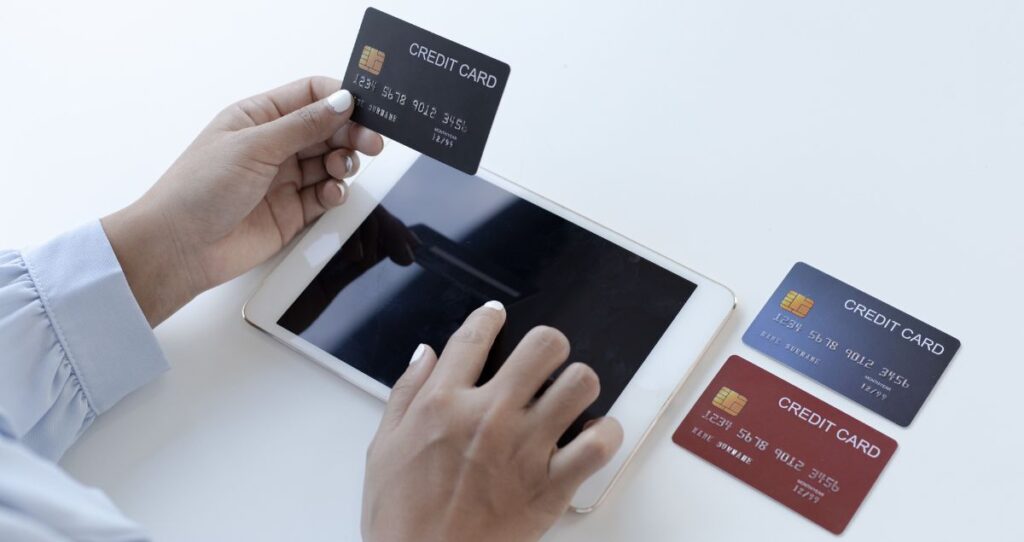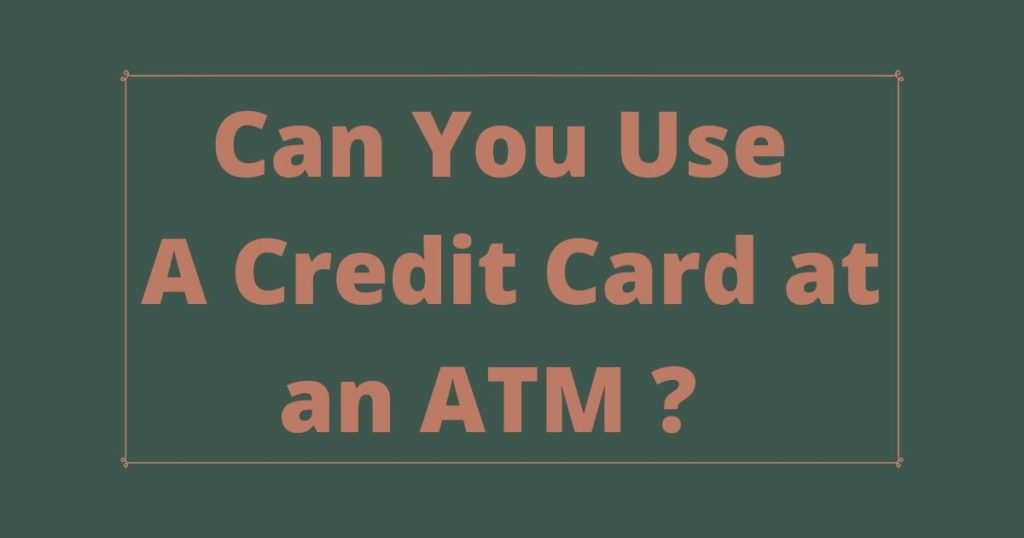The annual percentage rates or APRs on credit cards are some of the highest in the lending industry due to the lack of collateral. With the average APR for credit cards well over 20%, it is no wonder millions of people are struggling with credit card debts. The APR is usually charged when you carry a balance on your credit card, you have a cash advance, or a balance transfer. Lenders access the interest you pay on your credit card based on your credit score, market rates imposed by the Federal Reserve, and the type of card you carry.
Here is a guide on how APR on credit cards works and how to avoid paying high APRs if you want to maximize the benefits of having a credit card without getting into credit card debt.
What is Credit Card APR?
A credit card APR, or Annual Percentage Rate, is the total cost of using a credit card expressed as a yearly percentage. The APR includes all costs related to the card including fees, and interest. By default, the APR applies to the balance you carry on your credit card from month to month. In other words, you can avoid paying interest on your credit cards by paying all your balances in full by the due date each month.
There are other credit card transactions that result in paying APR on credit cards even if you pay your balances on time. For example, when you take out a cash advance, you start paying a cash advance APR the same day, according to Bankrate. A cash advance is when you withdraw cash from a credit card which results in a cash advance APR, fees, and charges.
The APR on credit cards varies depending on factors such as your credit score, the card issuer, and the type of credit card you have. Some credit cards may offer lower APRs, particularly for individuals with good credit. Others may have higher APRs, especially for those with bad credit or those with thin credit files.
Read more: How to get cash advance from a credit card?
How does APR work on credit cards?
APR represents the cost of borrowing money and is expressed as a percentage of the total loan amount. For credit cards, APR refers to the total interest rate and additional fees and charges applied to unpaid balances carried over from month to month. The APR isn’t a one-time fee or a fixed rate. Instead, it fluctuates based on various factors, such as interest hikes by the Federal Reserve and your creditworthiness, according to Chase. For example, if you recently had a foreclosure on a home, your credit card APR could go higher since the risk of lending you money has gone to the roof.
When you carry a balance on your credit card beyond the due date, the card issuer calculates the interest due based on the APR. This interest is then added to your outstanding balance which makes your debt go higher and the next interest is calculated based on that new balance. This is what is known as compounding interest.
Most credit card interest compounds daily-meaning the yearly interest rate is divided into 365 times for a daily interest and that interest is added to the principal for the following day and the process is repeated. The more times your interest compounds, the more money it costs you in interest.
Understanding how APR works on credit cards works allows you to make informed decisions about paying off your balance, considering balance transfers, or comparing different credit card offers. Before getting a credit card, carefully review the APR, as a higher APR can significantly impact the cost of borrowing and how quickly you can pay off your credit card debt.
Related: APR vs. interest rate: What is the difference?
Example of how APR works on credit cards
To further explain how APR works on credit cards, let’s use the following example. Imagine you have a credit card with a $5,000 balance and an APR of 25%. With this information, you can calculate how much interest you would owe if you carried that balance for a year without making any payments.
To calculate the daily interest charges, use the following formula: Balance x APR / 365. Based on our example, the calculation would be $5,000 x 0.25 / 365 = $3.42. This means that on the first day, you would accrue approximately $3.42 in interest. Since APR on credit cards compounds daily, this $3.42 will be added to your principal to calculate the interest on the next day. If the first day of the year, your balance was $5,000, the next day it will be $5,003.42. This means the new interest will be $5,003.42 x 0.25 / 365 = $3.43. This interest will then be added to the principal of the second day to calculate the new principal for the third day and so on.
Over the course of a year, the total interest alone paid on your credit card balance would be around $1,250. So, if you were to make no payments and simply let the balance accumulate, your total credit card balance at the end of the year would be $6,250.
How does APR on credit cards affect your balance?
The implications of APR on your overall credit card balance extend beyond the immediate impact on a single purchase. APR can compound over time, gradually increasing your debt if left unchecked. Even a seemingly small difference in APR can add up significantly in the long run.
From the previous example, we illustrated how a simple $5,000 will cost you $1,250 in interest alone and turn that balance into a $6,250 debt in one year if left unchecked. The point here is that the APR increases your credit card balance at an exponential rate due to the compounding effect which makes it harder to pay off your balances.
If you continue to carry this balance for a few more years, your debt will grow exponentially and become impossible to pay off until you default on your loan.
To minimize the impact of APR on credit cards and avoid falling into a cycle of debt, prioritize paying off your credit card balances in full each month to avoid accruing interest charges. Additionally, avoid costly credit card transactions such as cash advances which come with excessive fees, charges, and high APRs. If you have an expensive purchase such as a car purchase, do not use a credit card to avoid exhausting your credit limit and accumulating too much credit card balance in a short time. This allows you to maintain good credit, helps you build your credit score, and prevents you from accumulating credit card debts altogether.
What is a 20% APR credit card?
A 20% APR credit card refers to a credit card that charges an annual interest rate of 20% on any outstanding balances.
Having a 20% APR credit card means that any unpaid balance on your card will accrue interest at a rate of 20% per year. For example, if you have a $1,000 balance on your card, you would be charged around $200 in interest over the course of a year. This can add up quickly, especially if you carry a high balance or make only minimum payments.
What is a good APR for a credit card?
When it comes to credit card APRs, what is considered a good rate can vary depending on several factors. Your creditworthiness, the industry, and the type of cards you want can all affect the APR you get. Generally, a good APR is a lower one, as it means you’ll be paying less in interest over time. While APRs can range widely, with some cards offering rates as low as 0% for an introductory period, a good APR for a credit card is typically below average APR in each industry.
For example, if the average APR for cashback credit cards is 24.12%, securing a much lower than this average would be considered good. The lower the APR you can get, the better. When considering the total credit card industry, the average credit card APR is 20%, according to the Los Angeles Times. This APR, however, might be hard to qualify for depending on your industry and credit score.
Lending Tree has compiled APRs for different types of credit cards from minimum APRs, Maximum APRs, and average APRs. The lowest APR is currently being offered by low-interest credit cards with a minimum APR of 13.84%, a maximum APR of 22.97%, and an average APR of 18.40%. Other credit card APRs on the list range between 20% to 30%. For more details on different types of credit cards and their APR ranges, check out the LendingTree list of new credit card APRs during the month of August 2023.
Most credit cards on the list average between 23% to 25% APR. Meaning, your credit card APR will be considered good if you can qualify for a lower APR than these averages.
When determining your APR, credit card issuers rely on your credit score and credit history in general. If you have an excellent credit score and a solid payment history, you may have a better chance of securing a credit card with a lower APR. On the other hand, if your credit score is poor or you have a history of late payments, you may find yourself with a higher APR.
Different types of APRs for credit cards
APRs on credit cards vary by type of card and transaction on the card. Here is a list of different APRs for credit cards you should know about.
Cash advance APR
A cash advance is the process of getting cash out of your credit card which is usually done at an ATM, cash register, or by visiting your local branch. Cash advance APRs are usually higher than regular APRs on credit cards. Additionally, cash advance comes with extra fees and charges.
Related: How to take out cash from a credit card at an ATM?
Balance transfer APR
Just like the name sounds, the balance transfer is the process of transferring your credit card balances to another credit card. Credit card issuers apply a different APR for this credit card transaction.
Related: What is the Balance transfer and how does it work?
Purchase APR
Purchase APR is designed for the balance you do not pay by the grace period of your credit cards from normal use of your credit cards. This APR is what you should expect to pay from day-to-day activities on the card such as buying groceries, paying for gas, shopping, etc.
Penalty APR
The penalty APR is an APR credit card issuers charge you when you are late on your payments or when you default on your loans. According to Credit Karma, a penalty APR is usually applied to your outstanding balance when you are 60 days past due to offset the extra risk you pose for not paying your balances. The penalty APR can be as high as 30% depending on the card issuer and the health of your credit.
Introductory APR
An introduction APR is the APR credit card issuers and other lenders give you as an incentive to open an account. These APRs are also known as promotional APRs and they are usually lower than regular APRs and they can be as low as 0%.
Being an introductory APR also means that it will not last forever. These APRs usually last for a few months and sometimes more than a year. Once this period is over, a regular APR on that card kicks in-meaning you will start paying interest on your credit card balance once the introduction period is over.
For example, a 0% APR credit card for the first 12 months means that you will not pay interest on your credit card for 12 months. After 12 months, however, you will start paying a regular APR for that credit card.
Tips for managing credit card APR
Now that you understand how APR on credit cards works, how can you manage your APR? If you plan to pay off your balance in full each month and avoid carrying a balance, the APR may be less of a concern. However, if you anticipate carrying a balance from time to time, it’s essential to find a credit card with a lower APR to minimize the interest charges you’ll incur. You should also have strategies in place to help you manage your credit balances and avoid unnecessary interest charges.
Here are some valuable tips to help you manage your credit card APR.
- Pay your bills on Time. One of the best ways to manage credit card APR is by consistently paying your bills on time. Late payments can not only result in penalty fees but also trigger an increase in your APR. Set up payment reminders or automatic payments to ensure you never miss a due date.
- Reduce your debt. Carrying a high balance on your credit card can lead to a higher APR, as lenders view it as a higher risk. By actively working to reduce your credit card debt, you can not only lower your APR but also improve your overall financial health.
- Negotiate with your credit card issuers. It may be worth contacting your credit card company to negotiate a lower APR, especially if you demonstrate a good payment history or have been a long-term customer. Your lender is not obligated to lower your rate, but it does not hurt to try.
- Consider a balance transfer. If you’re struggling with a high APR on your current credit card, consider transferring the balance to a card with a lower or even 0% APR introductory offer. This can help you save on interest payments and give you time to pay down your debt more effectively.
- Read the Fine Print. Credit card companies often update their terms and conditions, including APR rates. Make sure to regularly review your statements and take note of any changes.
Does APR apply if I pay on time?
Generally speaking, the APR applies when you carry a balance on your credit card. This is because the APR is the cost you pay for having that balance on your credit card. So, if you pay all your credit card balances in full at the end of each month, you will not pay the purchase APR as it is based on the balance you carry on your credit card.
Depending on the type of transactions on your credit card, however, you might still pay APR. For example, balance transfers and cash advances come with their APRs which have nothing to do with paying your balance on time. The moment a cash advance is performed on your credit card, the interest starts accruing the same day until you pay off that balance.
Is 25% APR good or bad?
A 25% APR may sound high, especially when compared to the 0% promotional rates often advertised by credit card companies. However, the overall perception of whether a 25% APR is good or bad depends on various factors such as the health of your credit and the type of card you carry. It is also worth mentioning industry rates where most credit cards come with average APRs between 23% and 25%, according to data from LendingTree. Meaning that a 25% APR is not far off from the average rates credit card issuers are currently offering.
If you have an excellent credit score and a history of responsible credit card usage, a 25% APR will be less favorable. This is because having good credit qualifies you for credit cards with lower interest rates such as 20% and introductory 0% APR cards.
On the other hand, if you have a lower credit score or a limited credit history, a 25% APR might be more in line with your expectations.
From a financial point of view, no interest rate is good for credit card spending, unless it is 0%. This is because credit cards are designed for spending. Therefore, it does not make sense to pay interest on the money you used to buy gas, food, clothes, etc.
How can I lower my APR?
The APR varies based on a number of factors which include your credit score, market rates imposed by the federal reserves, etc. But, it is possible to lower your APR, and here are practical tips to help you do it.
- Establish a good credit history. Lenders generally offer lower interest rates to individuals with higher credit scores. By maintaining a solid track record of making timely payments and keeping your credit utilization low, you can improve your creditworthiness over time. This may open up opportunities to negotiate for a lower APR with your credit card issuer.
- Transferring your credit card balance to a card with a lower APR. Many credit card companies offer promotional balance transfer offers, which allow you to move your existing balance to a new card with a lower interest rate. However, it’s crucial to read the fine print and understand any associated fees or changes in terms that may come with the transfer.
- Reach out to your credit card issuer directly and ask for a lower APR. While it’s not guaranteed, some credit card companies may be open to negotiating a lower rate, especially if you have a good payment history with them.
- Shop around for credit cards with lower APRs. If you are applying for a new credit card account, shop around and compare multiple offers. This will allow you to find a credit card with a lower APR and better terms.
How high of an APR is too much?
Credit cards come with some of the highest APRs in the lending industry. The fact that you don’t use credit cards for anything important other than spending, makes it unreasonable to pay a higher APR on a credit card.
So, how high of an APR is too high for credit cards? To know if you are being charged too much on your credit cards, here are a few tips to help.
The first tip is to compare the APR of your credit card with the average APR for similar cards in the market. This will give you a baseline to determine if your interest rate is significantly higher than the norm. If your APR stands well above the average, it’s a strong indication that you may be paying too much in interest charges. For example, the current average APR for cashback credit cards is 24.12%, according to LendingTree. If you are paying 26% APR on your cashback credit card, your rate will be well above a typical APR for cashback credit cards which makes it too high.
Another factor to consider is your credit score. Lenders typically offer better interest rates to individuals with higher credit scores, as they are considered less risky borrowers. If your credit score is excellent, but your APR is still unreasonably higher than the average APR for similar cards, it may be worth reaching out to your credit card company to negotiate a lower APR.
Why is my APR so high with good credit?
While it’s true that a good credit score generally leads to lower interest rates, there are other factors that can contribute to a higher APR. One possible reason is that credit card companies take into account the overall market averages when setting their interest rates. So, even with a good credit score, if market interest rates are high, your APR might still be high.
Another factor to consider is that credit card companies often offer promotional rates to attract new customers, which can be lower than the standard APR. However, these rates are usually temporary and will eventually expire. If you’ve been enjoying a promotional rate for a while, it’s possible that your APR has increased once the promotional period ended.
Additionally, your credit card company may have changed its terms and conditions, leading to a higher APR for all cardholders, regardless of credit score. This is why it’s important to regularly review your credit card statements and any correspondence from your card issuer.
More credit card tips
Benefits of secured credit cards you did not know
What is the difference between secured and unsecured credit cards?
What is an unsecured credit card?
Can I get a credit card without a job?
What factors do credit card issuers consider for your application?







